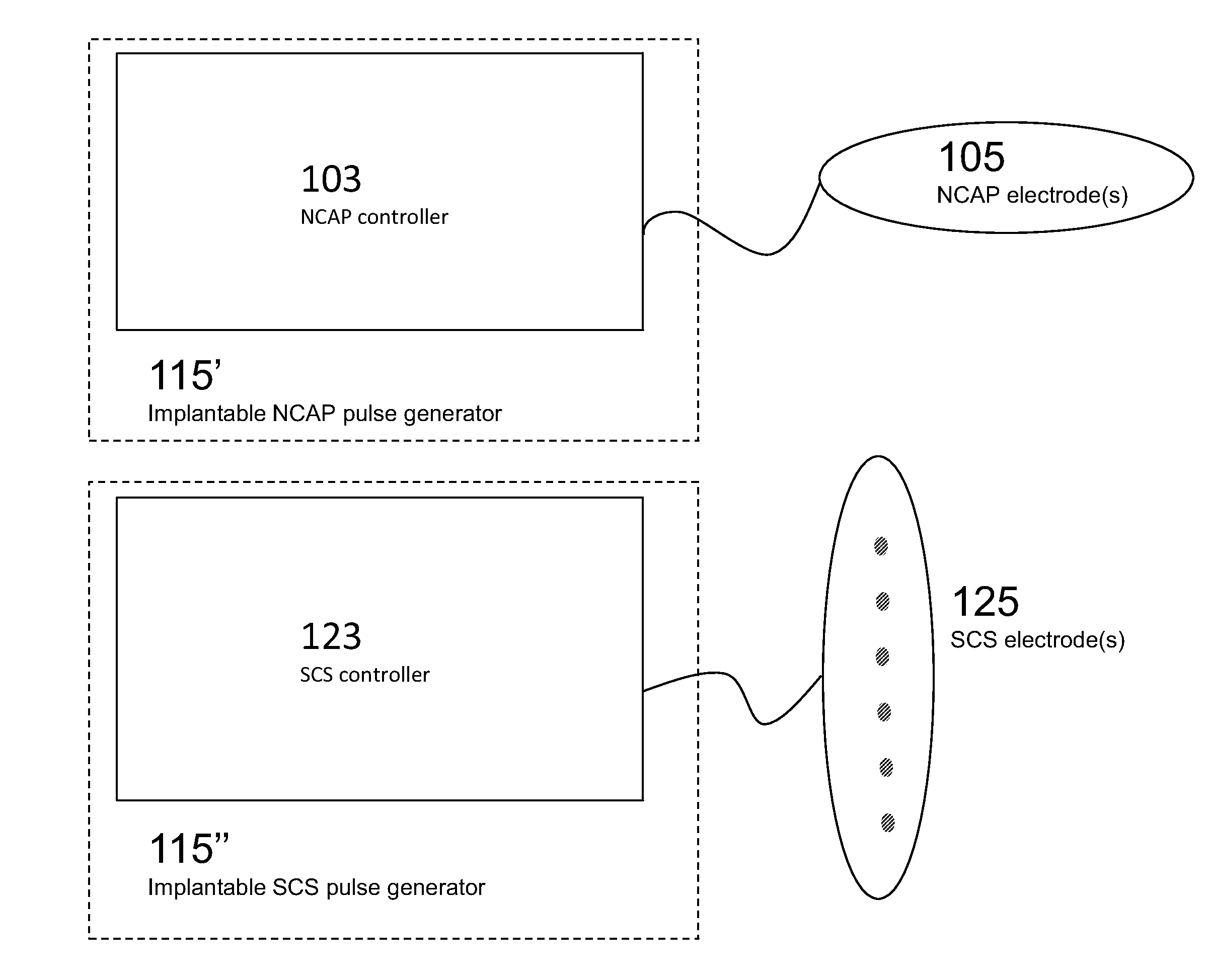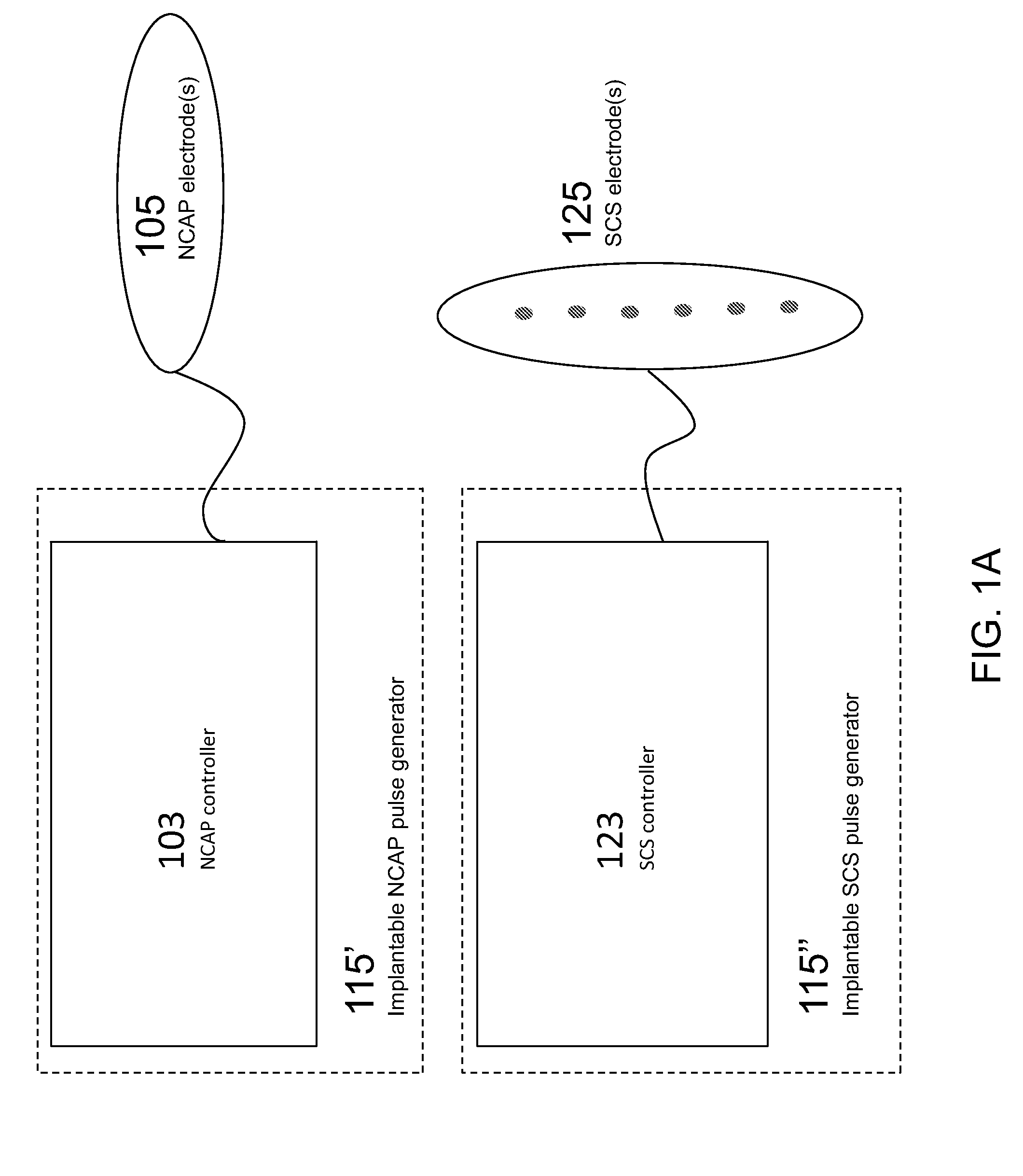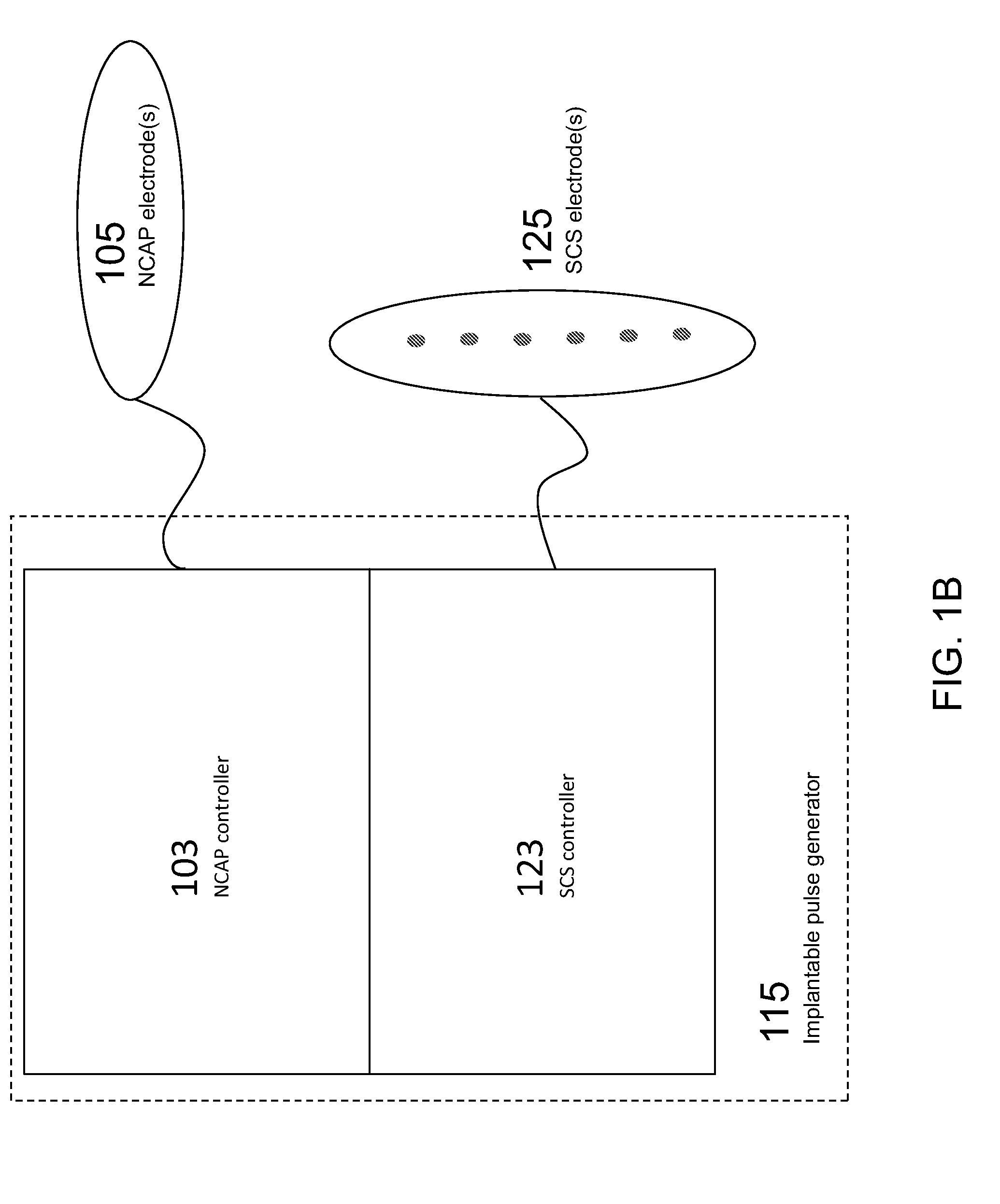Modulation of the cholinergic Anti-inflammatory pathway to treat pain or addiction
a cholinergic anti-inflammatory and pain-relief technology, applied in the direction of spinal electrodes, internal electrodes, therapy, etc., can solve the problems of chronic pain, pain in people, and traditional pain drugs often fail to quell neuropathic pain
- Summary
- Abstract
- Description
- Claims
- Application Information
AI Technical Summary
Benefits of technology
Problems solved by technology
Method used
Image
Examples
Embodiment Construction
[0032]We herein describe treatment of pain (particularly chronic and neuropathic pain) by modulation of the NCAP (neuronal cholinergic anti-inflammatory pathway). Modulation may include, for example, stimulation of the vagus nerve. A stimulator (e.g., implantable pulse generator) may be used to stimulate the cervical region of the vagus nerve to treat pain. Stimulation may be done in conjunction with (and may potentiate the activity of) one or more pain treatments such as pharmacological treatments (e.g., narcotics). Other regions of the vagus nerve (or other portions of the cholinergic anti-inflammatory pathway) may be stimulated as well.
[0033]In particular, overlapping (or concurrent) stimulation of the NCAP with existing treatments for chronic and neuropathic pain may enhance the effects of the chronic pain treatment. Thus the NCAP therapy may reduce the dosage level, treatment time, treatment / stimulation intensity, or other treatment parameters, in the short or the long term. Th...
PUM
 Login to View More
Login to View More Abstract
Description
Claims
Application Information
 Login to View More
Login to View More - R&D
- Intellectual Property
- Life Sciences
- Materials
- Tech Scout
- Unparalleled Data Quality
- Higher Quality Content
- 60% Fewer Hallucinations
Browse by: Latest US Patents, China's latest patents, Technical Efficacy Thesaurus, Application Domain, Technology Topic, Popular Technical Reports.
© 2025 PatSnap. All rights reserved.Legal|Privacy policy|Modern Slavery Act Transparency Statement|Sitemap|About US| Contact US: help@patsnap.com



